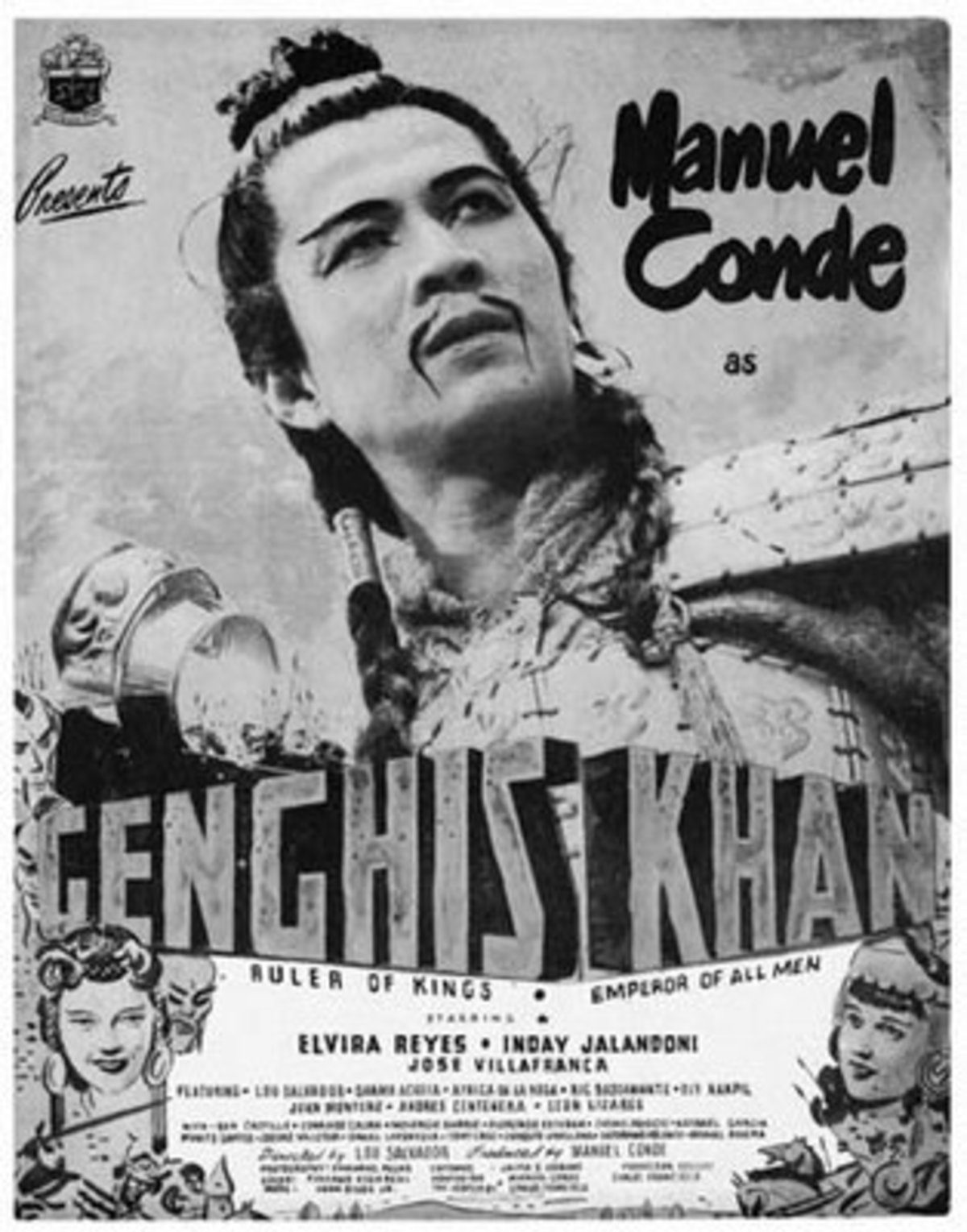Genghis Khan

Manuel Conde, Lou Salvador
Philippines – 1950

Production: Manuel Conde (MC Production)
Language: Filipino, Tagalog
Duration: 88 min
Color: Black and White
Synopsis: Temujin, who later becomes Genghis Khan, is a handsome, ferocious, cunning, but likable fellow, leading by virtue of his charisma as much as through physical prowess. While competing at the Man of Men contest, he falls in love with an enemy commander’s daughter, Li Hu. His great leadership trial, however, comes when he must restore order and exact justice for the sacking of his hometown, and he soon demonstrates his potential as a great conqueror.
Notes:
Genghis Khan bears a striking resemblance to a classic Hollywood western. A pseudo-biography of Genghis Khan (1162-1227), the savage Mongol conqueror, the action contains all sorts of riding, shooting (bow & arrow) and fighting. Notably bloodthirsty items: a contest among Mongol warriors featuring strangulation and eye-gouging; Genghis Khan, with an arrow protruding from his torso, demolishing four of the enemy by transfixing them simultaneously with one shot from a crossbow; a heroine about to be torn apart by wild horses; almost every variety of plunder and pillage, goring and evisceration, burning and looting, stabbing and beheading, putting to torch and torture.
Philippine Producer-Director Manuel Conde plays the part of Genghis Khan as a rather handsome, ferocious, cunning but likable fellow, a sort of medieval Shane roaming the Gobi Desert. The picture traces his career from his youthful nomad days to his campaign of world conquest. Though of dubious historical accuracy, the movie is undoubtedly an excellent outlet for the pent-up aggressions of well-behaved moviegoers. Filmed on a large scale, it has both barbaric splendor and fighting frenzy. The royal heroine also gets into the spirit of things with her enormous sword.
In 2011, the Film Development Council of the Philippines made good on its long-standing promise to establish an archive for the nation’s cinematic output—of which a dismaying 70 percent is thought to be lost. By the end of that year, the newly formed National Film Archive of the Philippines (NFAP) began a collection ranging from studio productions to home-movie footage of former presidents, Super-8 workshop films, and experimental shorts. The archive’s first restoration, a collaboration with La Biennale di Venezia, was Manuel Conde’s Genghis Khan (1950); the second, completed in partnership with the World Cinema Foundation, was Lino Brocka’s devastating urban tragedy Manila in the Claws of Neon (1975), to be followed by On My Way to India Consciousness, I Reached China (1968) by Henry Francia and White Throne (1984), an early work from the legendary animator Rox Lee.
Excerpts adapted from from “The New Pictures.” Time 61, no. 25 (June 22, 1953): 86.
and “Restoration Row.” Film Comment 50, no. 1 (January 2014): 11.


